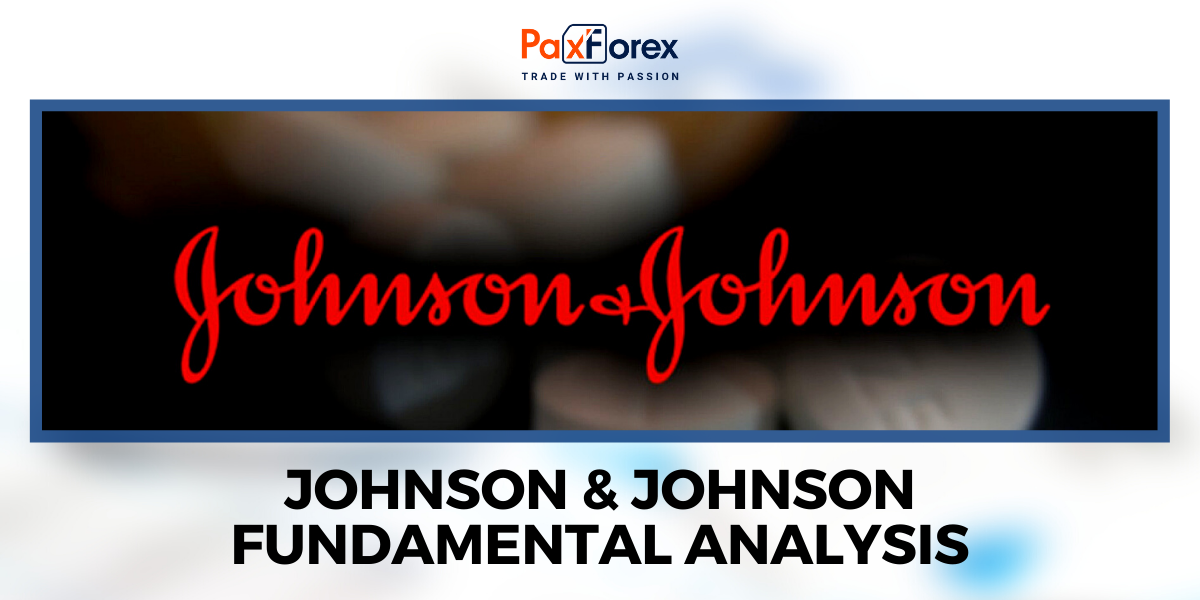
Source: PaxForex Premium Analytics Portal, Fundamental Insight
With the S&P 500 Index just 4% below its all-time high, investors watching for secure and rising income have to take a much closer look than they did five or ten years ago. Fortunately, there are still suitable options for investors looking for income with decreased volatility.
Stocks that have increased their dividends for at least 50 consecutive years are called Dividend Kings. Dividend Kings have historically given an attractive combination of rising dividends and a more rebounding stock performance during certain market recessions. Now that the Dividend King Johnson & Johnson is 8% below its all-time maximums, let's look at why up-to-date vulnerability could be a buying occasion for income investors.
House Democrats recently advanced a bill that would allow Medicare to use its size and scope to negotiate lower drug prices with drug companies. It is said that this strategy would save the U.S. government $500 billion over a decade.
The bill hit a snag after several moderate Democrats and many Republicans voted against it. Thus, the chances of the bill passing the House and Senate and reaching the White House desk for passage are quite slim.
And since the U.S. pharmaceutical industry received $539 billion last year alone, a $500 billion drop in U.S. pharmaceutical industry revenues over a full decade would result in only a slight decline in industry sales.
Notwithstanding the pressure on Johnson & Johnson's stock price as a consequence of the bill, the influence on a diversified healthcare company like Johnson & Johnson would be about a 3% reduction in total revenue.
The first bump for the business is that 49.5% of Johnson & Johnson's total sales of $45.63 billion in the first half of this year were generated outside the United States. Because the bill does not apply to Johnson & Johnson's consumer products segment (which sells key brands such as Neutrogena and Band-Aid) and the medical device segment (which treats cardiovascular, orthopedic, and other diseases), only Johnson & Johnson's revenue from pharmaceutical operations in the United States will be negatively impacted. By comparison, U.S. pharmaceutical revenue accounted for only 29.2% of Johnson & Johnson's sales in the first half of the year.
Notwithstanding whether or not the aforesaid Medicare negotiation bill is ever implemented, Johnson & Johnson is performing satisfactorily financially, and that will likely not change for the conceivable future.
In 2023, the last patent on Johnson & Johnson's best-selling drug, Stelara (used to treat inflammatory bowel disease and plaque-like psoriasis), will expire. Even so, Johnson & Johnson is a diversified pharmaceutical company. Stelara accounts for $4.42 billion, or less than 10 percent of total first-half revenue, and less than 20 percent of total pharmaceutical segment revenue. Several fast-growing drugs in Johnson & Johnson's portfolio should make up for a possible drop in revenue from Stelara.
The company's Tremfya drug (approved to treat plaque psoriasis and psoriatic arthritis) was first approved by the U.S. Food and Drug Administration (FDA) in 2017, which should lead to revenue growth for the drug this decade and early next decade. Sales of Tremfya in the first half of this year grew more than 40 percent year over year to $897 million, and the drug has been widely recognized by doctors and patients around the world. Tremfya's drug alone should make up for much of Stelara's revenue decline following patent termination.
Johnson & Johnson's blood cancer drug Darzalex was first approved by the FDA in 2015, which also gives the drug room to grow beyond that decade thanks to patent protection. In the first half of the year, Darzalex saw a 50% year-over-year increase in revenues to $2.80 billion, and this year the drug is on track for record sales of more than $5 billion in its sixth full year on the market.
Johnson & Johnson and AbbVie's chief cancer drug, Imbruvica, was first approved by the FDA in 2013 and likely won't face competition from generic drugs until at least the beginning of the next decade. And while it's been about a decade since Imbruvica was first approved, Johnson & Johnson's share of sales of the drug rose 13% to $2.24 billion in the first half of the year.
Johnson & Johnson's well-positioned pharmaceutical segment explains why analysts expect the company's earnings per share (EPS) to grow 8.9% per year over the next five years.
With revenue stability for the foreseeable future, Johnson & Johnson is an ideal stock for long-term ownership. One could argue that Johnson & Johnson is worth buying near its 52-week high, but the company is much more attractive at its current price, especially since its long-term prospects have not changed in recent weeks.
At the current price of $163 per share, Johnson & Johnson is trading at 19 times its 12-month free cash flow ratio (operating cash flow minus capital expenditures), slightly below the 13-year median price to FCF of 19.7. That's slightly more attractive than when Johnson & Johnson was trading at a 52-week high of $179 per share, and the price-to-FCF ratio was over 21.
Johnson & Johnson's beta factor is only 0.7, which is great for investors looking for a less volatile stock. The market's best dividend yield of 2.6% is another reason why the recent downturn seems like a gift from the market to long-term investors.
As long as the price is below the 166.40 level, follow the recommendations below:
- Time frame: D1
- Recommendation: short position
- Entry point: 159.00
- Take Profit 1: 158.00
- Take Profit 2: 156.30
Alternative scenario:
If the level of 166.40 is broken-out, follow the recommendations below:
- Time frame: D1
- Recommendation: long position
- Entry point: 166.40
- Take Profit 1: 169.50
- Take-profit 2: 171.30













